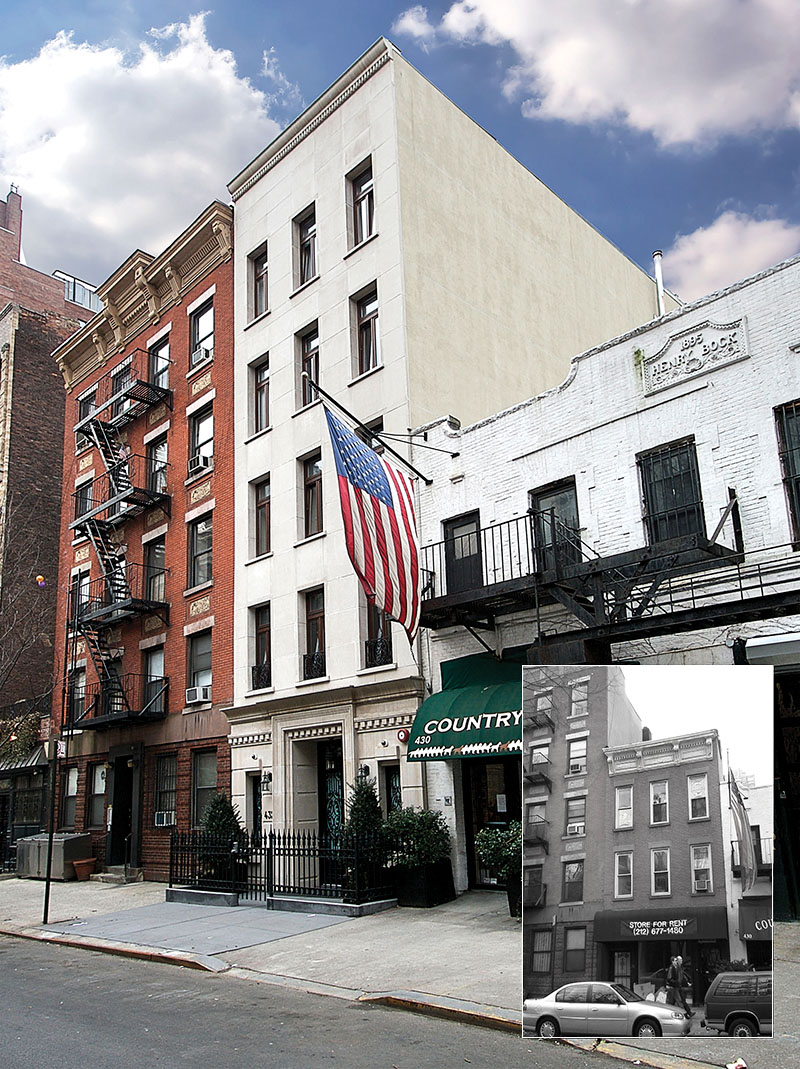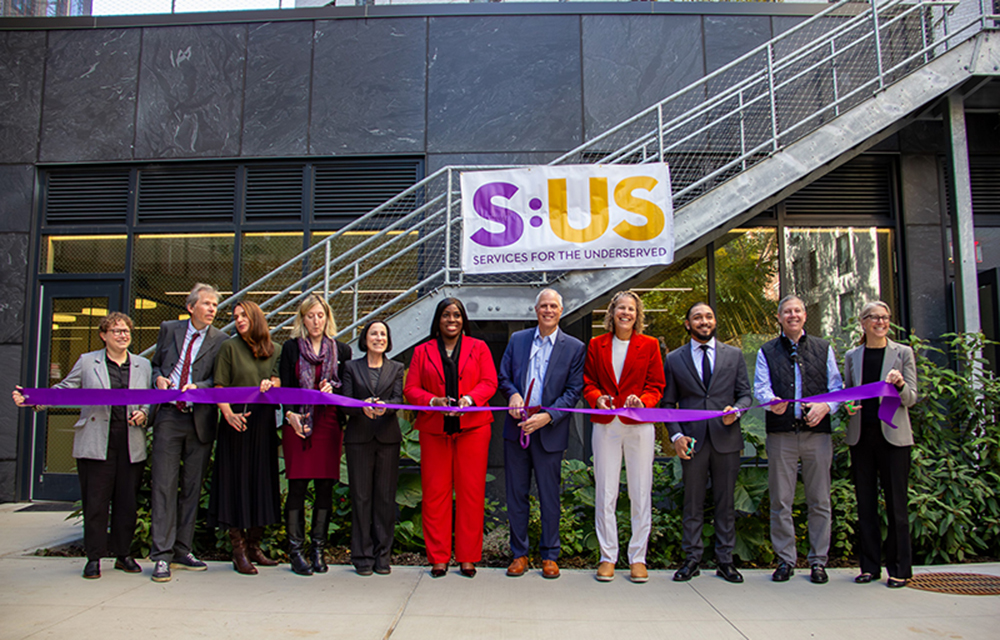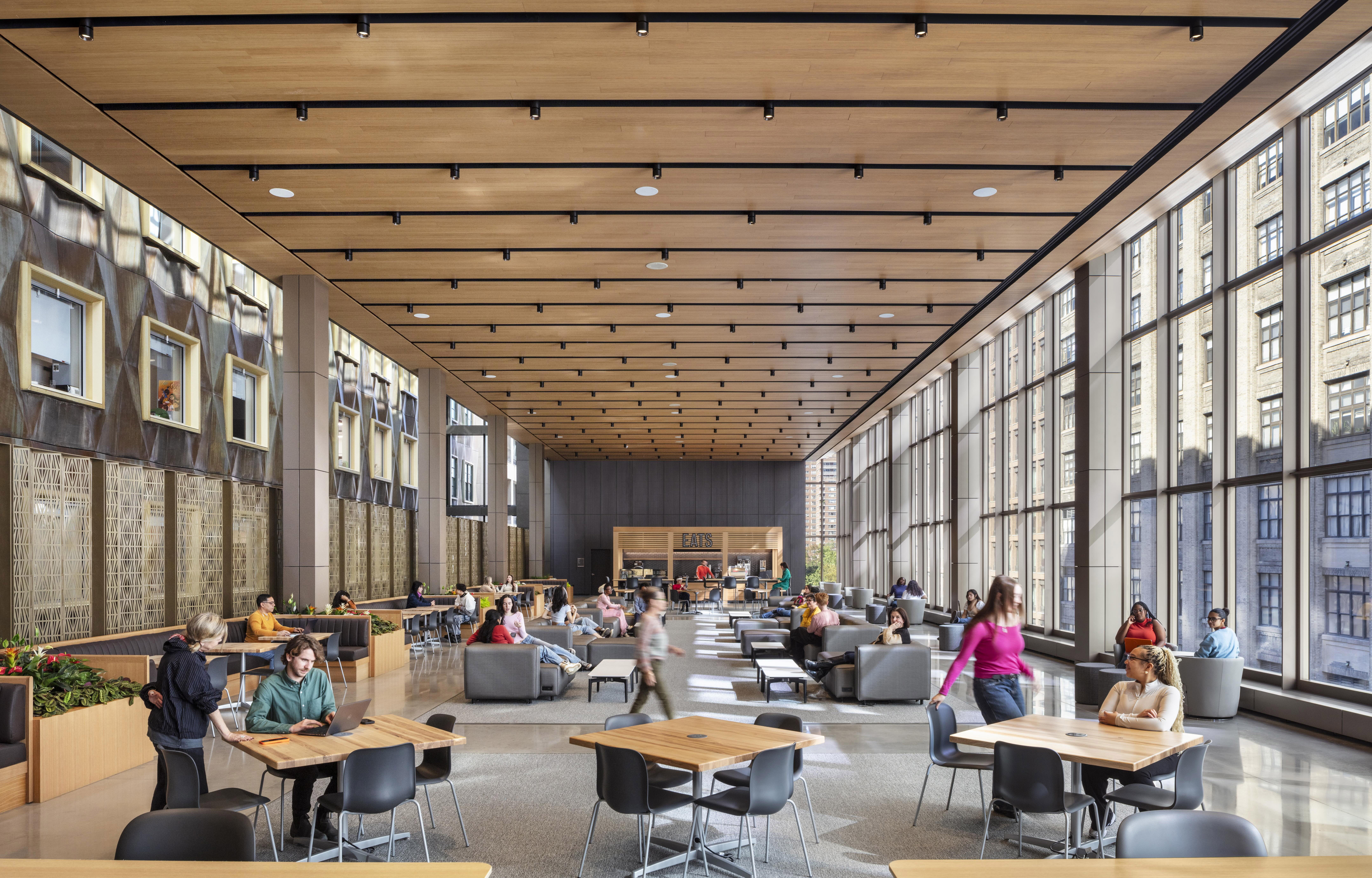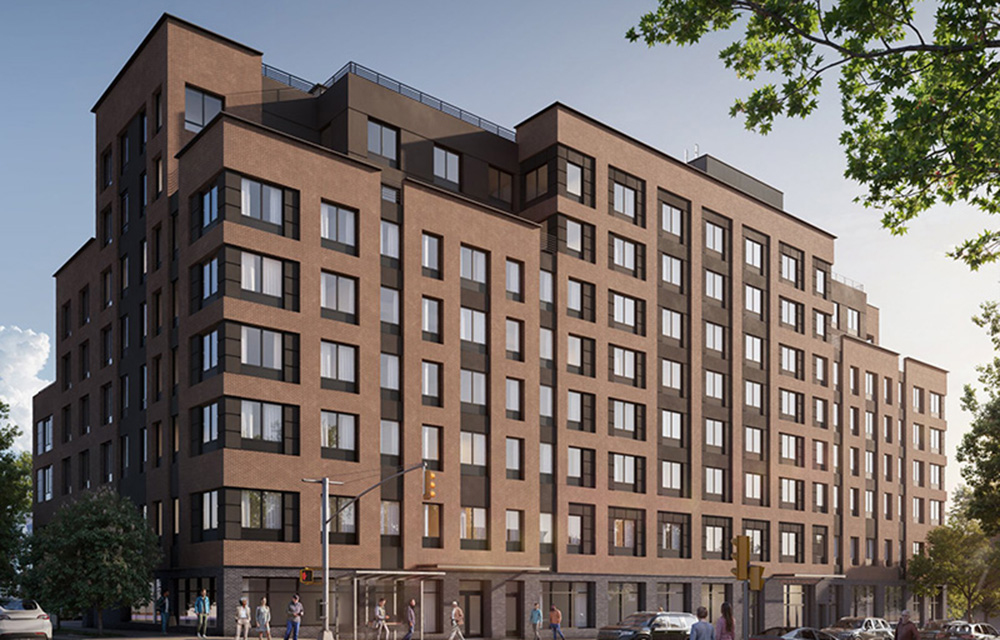Steven Kratchman Architect embraces vertical expansions

East Side involved adding a three-story vertical addition
to an existing three-story storefront with apartments above.
New York, NY During the past 20 years, Steven Kratchman Architect, PC (SKAPC), has completed over 50 vertical expansions to existing buildings. While adding upward is certainly not a new concept, its desirability has increased in tandem with development and redevelopment in urban environments where space is at a premium, as well as in suburban neighborhoods where property values continue to rise. However, the complexity of many building expansions often make them more challenging than ground-up construction.
“Any enlargement, whether it’s vertical, downward or sideways, can trigger a complexity factor,” said Steven Kratchman, the firm’s owner and founder. “These projects can be design intensive depending on a variety of factors, such as the condition of the site and existing building, the availability of design documentation, local ordinances and codes, and the building construction type and use.”
SKAPC specializes in repurposing and reinvigorating existing spaces with design concepts that are both sophisticated and practical. “My first experience working on a vertical expansion was as the design architect for a three-story addition to an existing five-story school structure,” said Kratchman. “We added a classroom floor and a new gym on top of a partially built out roof, and the existing floors required reinforcing of the columns and footings. The work was completed while the children were attending school, and the entire experience demonstrated first-hand the range of issues vertical additions can present.”
Addressing Structural Challenges
One of the first considerations when assessing the feasibility of a vertical addition or expansion is gaining a thorough understanding of the existing building’s structural capacity. Light construction, masonry wall bearing capacity tests, foundation and footing probes, and original filed and approved structural documents can assist the designer in enlarging the building efficiently and at lower costs.
Foundation work and party walls are sometimes the most challenging issues. When found to be lacking capacity, foundations need to be underpinned to support the weight of additional floors and increased wind load. A prime example is situated on 13th St. in Manhattan’s Meatpacking District, where SKAPC was hired to maximize a commercial condominium’s square footage with a six-story, 60,000 s/f vertical addition. The structure was originally built in the 1900s as a three-story, loft-style industrial printing warehouse, and the foundations could not easily be expanded. Lightweight materials and insulated metal panels were employed for the additional stories with the exception of the masonry street wall addition, where a glazed black brick was selected to contrast with the buff-colored existing building. The new non-combustible structure now stands on six steel columns that rise out of the existing heavy timber and mason base.
If the wall or walls between two adjoining buildings are shared or touching, they must be underpinned as well. Under the NYC Department of Buildings’ (DOB) new protection requirements, access agreements are required between the parties involved to underpin, protect and access the neighbors’ air space. Workarounds are often used to avoid complications or the additional expense of fees and time delays.
“For instance, rather than upgrade the shared wall, there is an option to build inboard of the party wall parapet on each side,” said Kratchman. “The downside is that approximately 12 to 18 inches is lost on each side at the upper floors of the vertical addition. When lot widths are small to begin with, as is often the case in urban settings, these floor area losses can be significant.”
Integrating Existing Engineering Systems
In addition to structural issues, engineering disciplines can influence a project’s design strategy. Existing mechanical, electrical, plumbing and fire safety systems, and capacities must be considered and weighed against the intended uses. “The locations of units, pumps, tanks and other equipment can affect the design bulk,” noted Kratchman. “Marrying these engineering systems and integrating them with the planned enlargement is essential to ensure maximum performance, comfort and safety.”
At 480 Park Ave. in Manhattan, a vertical solution provided tenant access via an existing, underutilized roof. After analyzing the three elevator cores of this pre-war Emory Roth building with a classic E plan, SKAPC found that one shaft had an existing bulkhead and water tank above it with unused mechanical elbow room. The building owners allocated their capital upgrade expense to cover the cost of raising the elevator one stop. This allowed the Kratchman team to carve out a new glass-windowed elevator lobby at the roof and an elevator runby at the tank room in the bulkhead above.
SKAPC’s residential conversion of a light industrial/commercial building in Murray Hill required careful thinking about the mechanical systems for the new units. “The building on East 36th St. was over-built per zoning requirements and the roofs were valuable common amenity spaces,” said Kratchman. “We created a mechanical room in each unit and placed the A/C and heating units on floor standing mounts with tenant and handyman access.” The mechanical floor area was then subtracted from the available floor area, aggregated and made available for a future penthouse addition.
Creating a Fit with Exterior Architecture
No matter how new or old a building is, the impact of an addition or enlargement on the surrounding neighborhood must always be a key consideration. The appearance from far away, close up at street level, and from the roof tops of other buildings is fundamental to the design strategy. Any or all of these viewpoints can influence whether the enlargement should match or contrast with its base as well as fit with the architectural style of the structures around it.
Creating a seamless blend of old and new proved to be the ideal solution for expanding a single family home in Bronxville. The existing ranch house was one of the last architectural holdovers in this prestigious commuter-friendly suburb. “We added one story and changed almost nothing to the exterior at curb side,” said Kratchman. “Even the windows and exterior facing were left as is. The home now fits within the context in which it is situated, which it never did before.”
SKAPC’s design for a townhouse on Manhattan’s Upper East Side–which involved adding a three-story vertical addition to an existing three-story storefront with apartments above–completely transformed the property. Kratchman initially recommended a brick structure to mirror neighboring buildings. “However, the owner is in the stone business and wanted the structure to have the grandeur of residences on upper Madison Ave.”
The French limestone façade, dramatic entrance, mahogany windows and custom metal sidewalk fence add to the exclusivity of the final result: an elegant uptown mansion home.
“With its 20’ x 100’ footprint, the property’s unique dimensions made this project particularly challenging,” said Kratchman. “Sometimes there is truly nowhere to go but up.”
Troutbrook expands with boutique condo project and Marriott Fairfield Inn & Suites renovation








.gif)
.jpg)
.gif)
.gif)